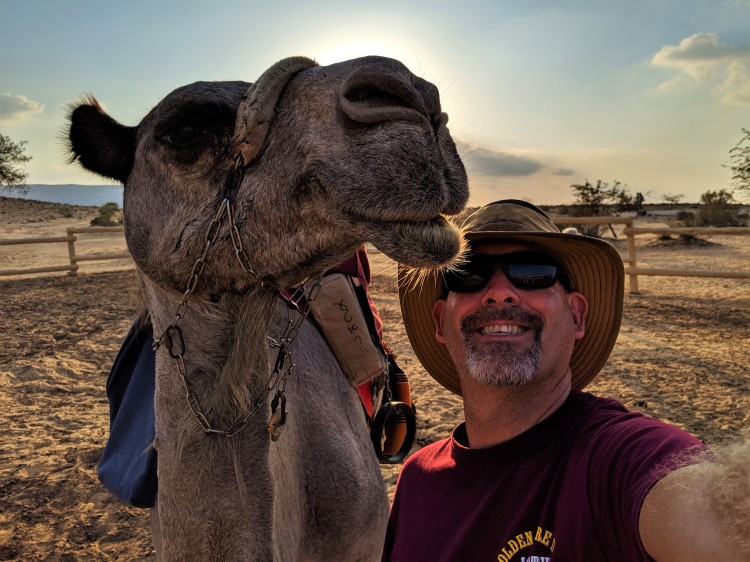

Overlooking Mamshit
On September 9th we said goodbye to the Camel Ranch, which offered such wonderful memories and experiences. It was time to drive down to Eilat, which is an Israeli town established in the late 1940’s in order to establish control of the area granted to the new country. Now a days it is a major beach resort as it is on the Gulf of Aqaba on the Red Sea. Within 40 km you have Saudi Arabia, Jordan, Israel, and Egypt. Amazing!!!!

The stable at Mamshit
Anyways on the way I took them to see two of the four Nabatean town ruins that make up Desert Cities in the Negev World Heritage Site. UNESCO says the following about them:
The four Nabatean towns of Haluza, Mamshit, Avdat and Shivta, along with associated fortresses and agricultural landscapes in the Negev Desert, are spread along routes linking them to the Mediterranean end of the incense and spice route. Together they reflect the hugely profitable trade in frankincense and myrrh from south Arabia to the Mediterranean, which flourished from the 3rd century BC until the 2nd century AD. With the vestiges of their sophisticated irrigation systems, urban constructions, forts and caravanserai, they bear witness to the way in which the harsh desert was settled for trade and agriculture.

a colasped cistern in the middle of the Avdat ruins
The first one we visited was Mamshit and I made sure to look my mother in the eyes when I told her where we were. Haha. I really liked this city ruins, out on the desert floor, along with the ruins of Avdat, which was up on a protective bluff. Both take around 30 minutes to an hour to walk around. Both had things I really liked. Mamshit had a wealth person’s house with mosaics, frescoes, and carvings, but the best part was the stone barn with arches and troughs. Over at Avdat the walled city and fortress was nice and I really liked the caves dotting the landscape outside the walls. These caves were enlarged and had building built in front of them to use as storage. The buildings are now rubble piles, but you can get into some of the caves and one or two have extra rooms.

One of the caves that use to have a building in front of it
As we drove south through the Negev desert everyone was surprised how mountainous the landscape was. Very rocky and steep….not at all like what is thought of as a desert. On the way we stopped at Ein Avdat which is a nice little oasis, although not the round pool surrounded by palm trees and sandy desert you might be picturing. This one was from a spring that ran down a valley with steep, high canyon walls. More than half way through the hike you come to a 50 foot waterfall that drops into an inviting pool. It is too bad there are signs everywhere saying no swimming, because that is exactly what I wanted to do. Right before the waterfall there are stairs carved into the rock wall that let you go above the waterfall, but you can not go all the way to the spring.

The Ein Avdat watefall.
The last place we saw on the way to Eilat was Makhtesh Ramon Crater, which is the largest erosion crater in the world. There is a visitor center, but if you simply drive through the town you will crest the rim and there the crater will be in all its glory. The best part is that you end up driving down into and across the crater.

Over looking Ramon Crater
